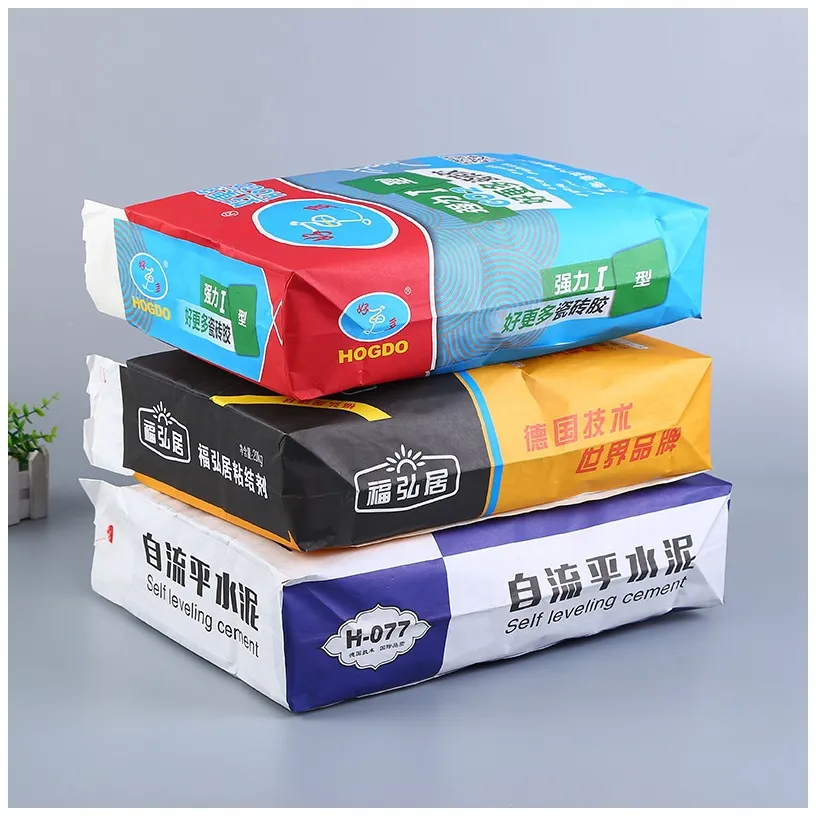
Valve Bags, known for their unique spout design, are at the forefront of modern packaging solutions. This article delves into the different types of valve bags, their environmental impact, and the sustainable practices adopted by manufacturers. We will also explore how the integration of renewable energy, such as a 2MW photovoltaic system, contributes to the green energy transition. Valve Bags
Introduction to Valve Bags
Valve Bags, or Valve sacks, are bulk packaging solutions that feature a discharge spout for easy and controlled material flow. These bags are designed to facilitate the pouring of bulk materials such as chemicals, food products, and building materials.
Types of Valve Bags
Valve Bags come in various types, each with specific features to cater to different industries and materials.
Block Bottom Valve Bags
These bags have a block bottom construction that provides stability and strength, making them ideal for heavy-duty applications.
Open Mouth Valve Bags
Designed with an open mouth for easy filling, these bags are commonly used in the construction industry for waste management.
Valve PP Bags
Made from polypropylene, these bags offer excellent chemical resistance and are widely used in the chemical industry.
Valve Woven Bags
These bags are woven for added strength and durability, suitable for a variety of bulk materials.
Environmental Impact and Sustainability
The packaging industry is increasingly focusing on sustainability and the reduction of environmental impact. Valve Bags play a crucial role in this shift towards greener practices.
Renewable Energy Integration
Manufacturers of Valve Bags are adopting renewable energy sources to power their production facilities. For instance, installing a 2MW photovoltaic system on factory rooftops not only meets the daily energy needs of the plant but also feeds excess electricity back into the grid, contributing to the national green energy transition.
Sustainable Materials
The development of Valve Bags using recyclable and biodegradable materials is gaining momentum. This shift aligns with the growing consumer demand for eco-friendly packaging solutions.
Product Parameters of Valve Bags
| Parameter | Description | Importance |
|---|---|---|
| Material | The type of material used, such as PP, PE, or PVC | Determines the bag’s strength, durability, and suitability for specific applications |
| Valve Type | The design of the spout, which can be block bottom or open mouth | Affects the ease of material discharge and the bag’s overall functionality |
| Size | Dimensions of the bag,影响其容量和适用性 | Must accommodate the volume of the products and ease of handling |
| Weight Capacity | The maximum weight the bag can hold without breaking | Ensures the bag can safely handle the load |
| Sustainability | The bag’s recyclability or biodegradability | Crucial for reducing environmental impact and meeting sustainability goals |
The Role of Renewable Energy in Valve Bag Production
The integration of renewable energy, particularly solar power, in the production process of Valve Bags is a significant step towards sustainability.
Photovoltaic System
A 2MW photovoltaic system installed on factory rooftops generates clean energy, reducing the carbon footprint of the manufacturing process.
Energy Efficiency
The use of solar power increases energy efficiency,降低了能源成本, and enhances the overall sustainability of the production process.
Grid Connection
By feeding excess electricity back into the grid, manufacturers can generate revenue and support the transition to a low-carbon economy.
Conclusion
Valve Bags are a versatile packaging solution that is evolving to meet the demands of sustainability and environmental responsibility. The adoption of renewable energy sources, such as solar power, and the development of eco-friendly materials are key strategies in this transition. As the industry continues to innovate, Valve Bags will play a significant role in promoting sustainable packaging practices.
This article has provided an overview of Valve Bags, their types, and their role in sustainable packaging. By understanding the product parameters and the benefits of renewable energy integration, manufacturers and users can make informed decisions when selecting packaging solutions that align with environmental goals.